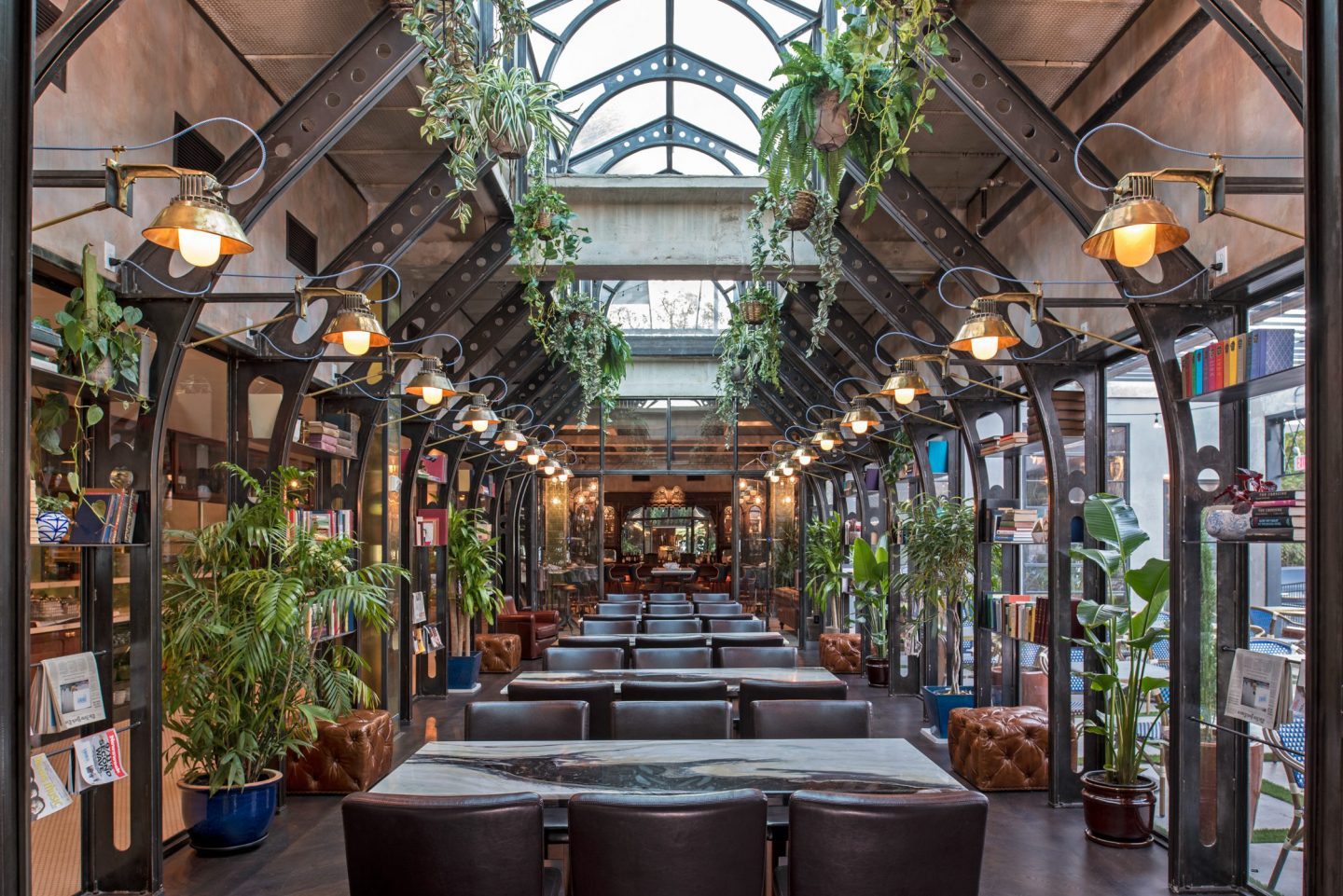
Commodore Perry Estate, Auberge Resorts Collection
Austin, Texas
Originally the home of Edgar and Lutie Perry, this 10-acre property was designed by Henry Bowers Thompson between 1917 and 1928 as a transportive oasis in the middle of Austin. Inspired by the owners’ vast European travels, a series of formal gardens along with a large Italianate mansion and carriage house were built along Waller Creek with a stone wall enclosing the entire compound.
The 10,800 square foot Italian Renaissance Revival mansion is surrounded by terraces, parterres and fountains, and listed on the National Register of Historic Places. Inside, intricately carved wood and plaster molding, hand-wrought ironwork and limestone details combine with Mexican-style tile work for an overall ornate effect. In its day, the estate set the bar for gracious entertaining in Austin. Perry sold the estate in 1944, declaring that the mansion was, “A great place to throw a party, but too big to live in.”

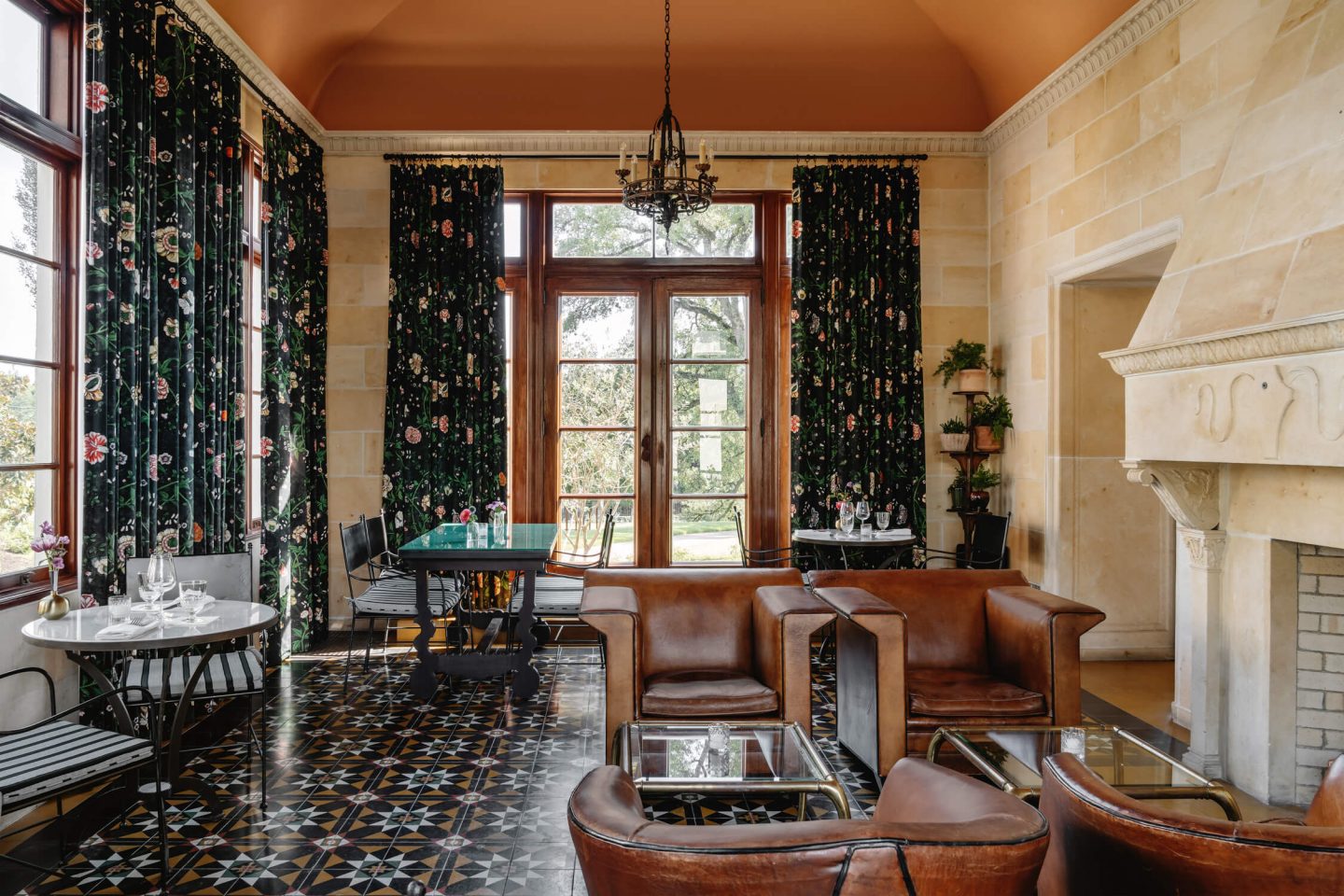
The estate’s current owners teamed with Auberge Resorts to set about transforming the venerable estate, reimagining the property through a modern interpretation of its residential past: relaxed European elegance with true gracious Texas hospitality. The redesign, which involved a combination of renovation and new construction, was a collaboration between architects Clayton Korte and Moule & Polyzoides, interior designer Ken Fulk, and Ten Eyck Landscape Architects. The design team returned the historic components of the property to their former glory and built a new restaurant to serve as a backdrop to the magnificent historic gardens—bringing together all the necessary elements for a new destination resort and private club, The Commodore Perry Estate.
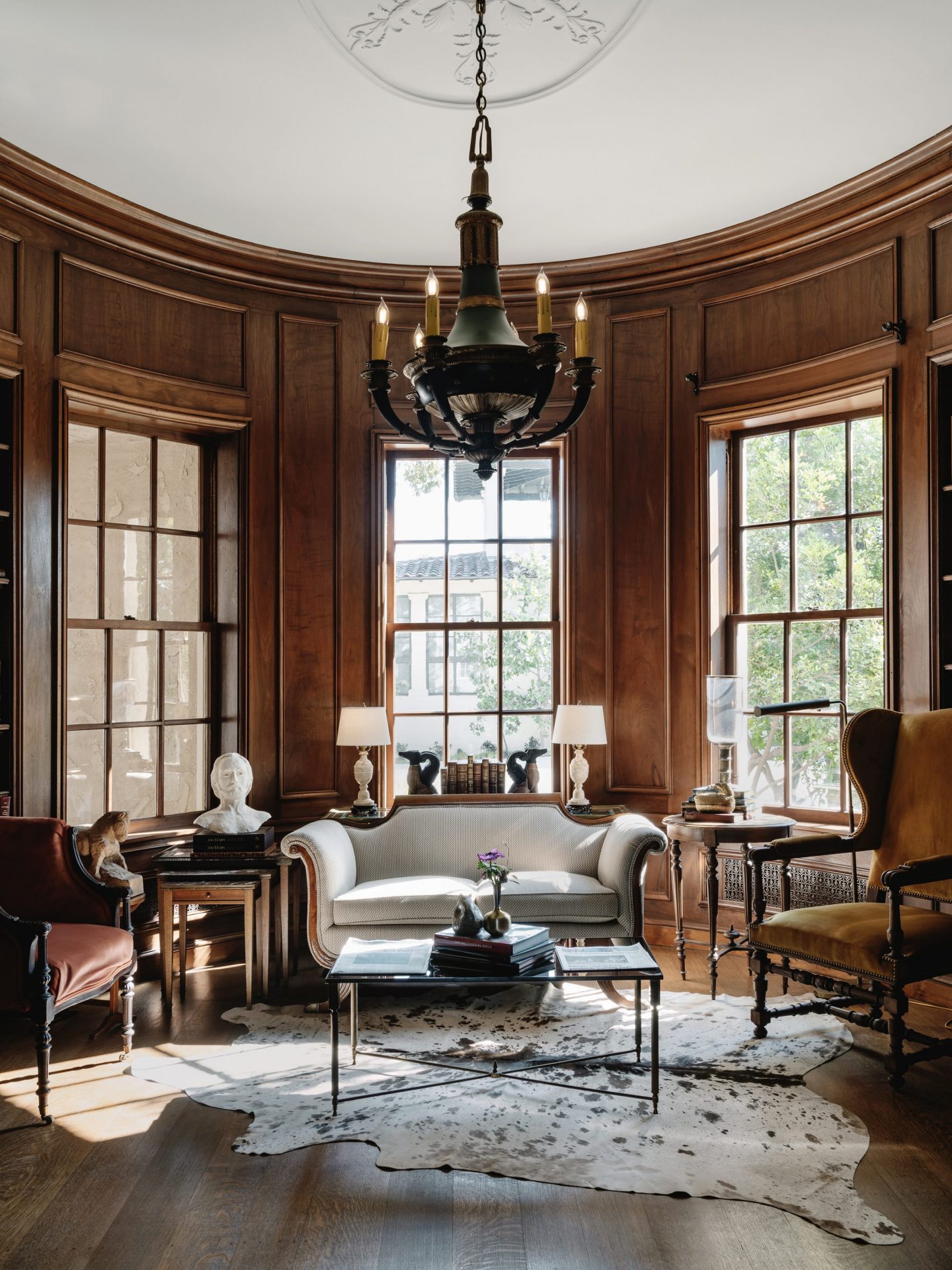

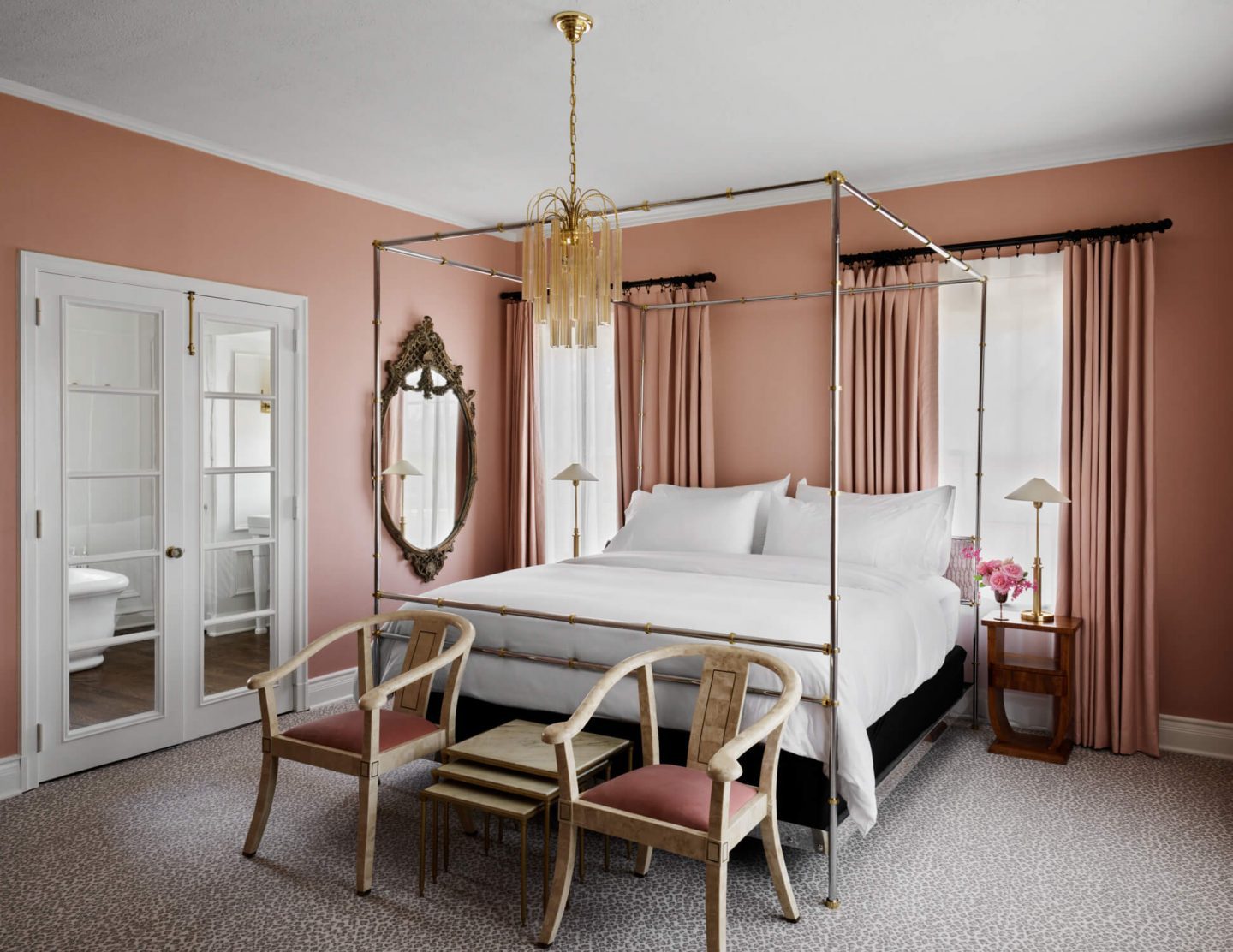
Throughout the property, every space has been furnished with a mix of custom and heirloom vintage pieces for an atmosphere that feels collected over time. The entry features the estate’s original curving wrought-iron staircase, with a new hand-painted ceiling fresco overhead. The second floor of the mansion is reserved exclusively for hotel guests, who will enjoy Resident Member status during their stay.
The five bedrooms from the Perry’s original residence have been transformed into charmingly distinctive hotel suites as a nod to its original inhabitants. Edgar Perry’s Suite, with its safari-inspired play of patterns, reflects a love of world travel and high culture, while Lutie Perry’s Suite presents a softer side in a palette of pink velvet, faux fur and muted leopard carpet. The redesigned en suite baths were clad in ceramic tile inspired by the residence’s existing Deco era bathrooms.

Downstairs, the entrance leads to the main hall with a loggia, terrace and the gardens beyond, which serve collectively as a lobby and gathering space. Other rooms downstairs in the mansion function as they historically would have: The Living Room is furnished with a new service bar and deep Chesterfield sofas for gathering fireside with a cocktail; The oval book-lined Library is set up for reading or quiet conversation with overstuffed chairs and a game table; the sunny Solarium, with its original tile floors, is perfect for small bites or cocktails. The Dining Room and Breakfast Room are dedicated to informal dining experiences throughout the day. With a wide range of indoor and outdoor lounge options, including the Loggia and Terrace, Members and Resident Members can enjoy a daily menu of Estate favorites and signature cocktails with prime seating for club programming, such as intimate concerts, lectures or tastings.
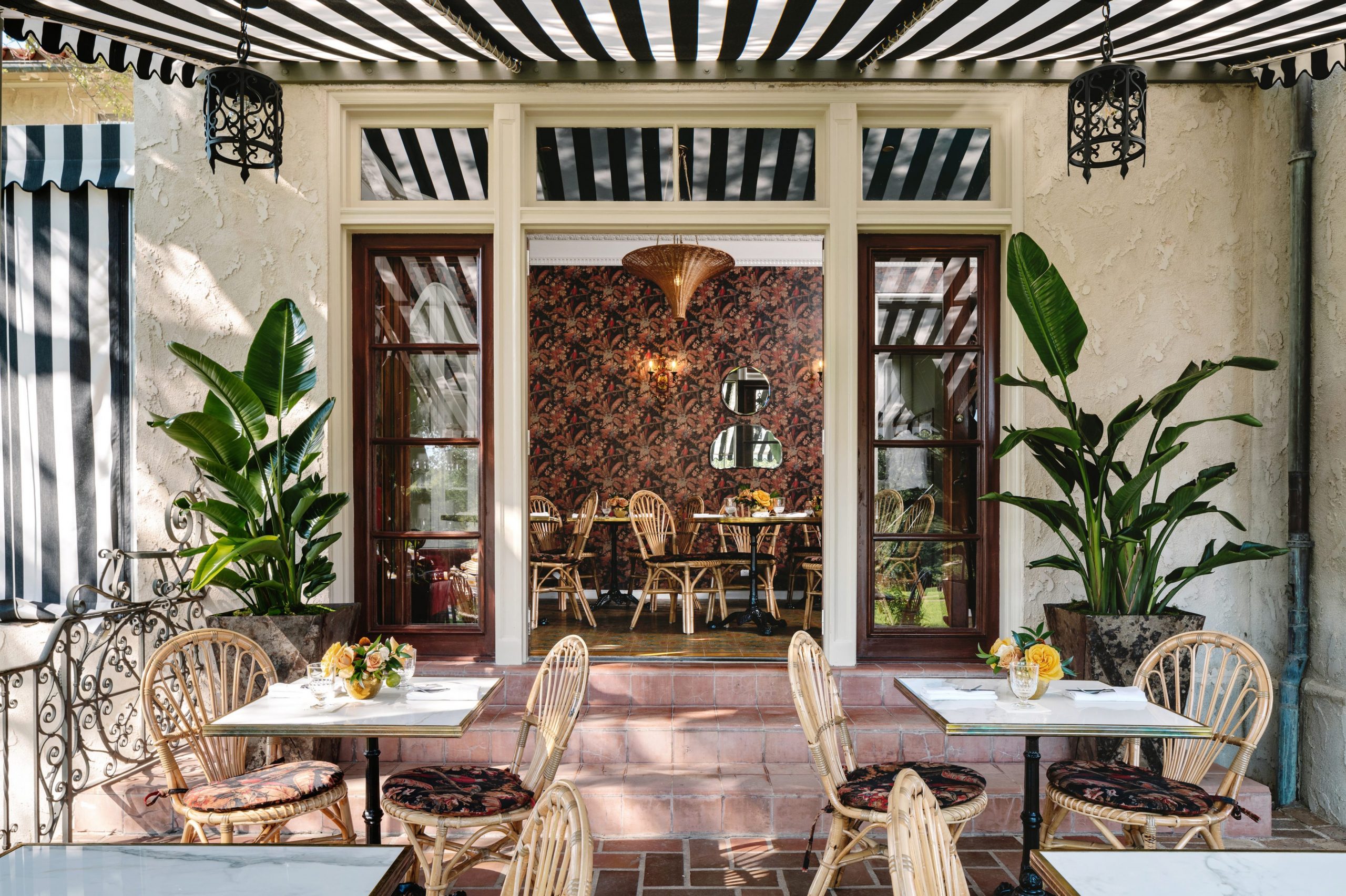
The historic two-story Carriage House was updated and turned into a multipurpose facility, featuring a fitness center on the main floor and Auberge offices on the second floor. The estate grounds, designed by Ten Eyck Landscape Architects, including the legacy swimming pool, were transformed and activated through the addition of agricultural gardens, complemented by a network of paths, new and renovated gardens, courtyards, outdoor dining spaces, modernized streetscapes, and the restoration of Waller Creek as it flows through the property. Balancing the historic and the modern, the pastoral and the urban, and the protection of precious open space with increased density, the landscape serves as a gracious retreat within the city.

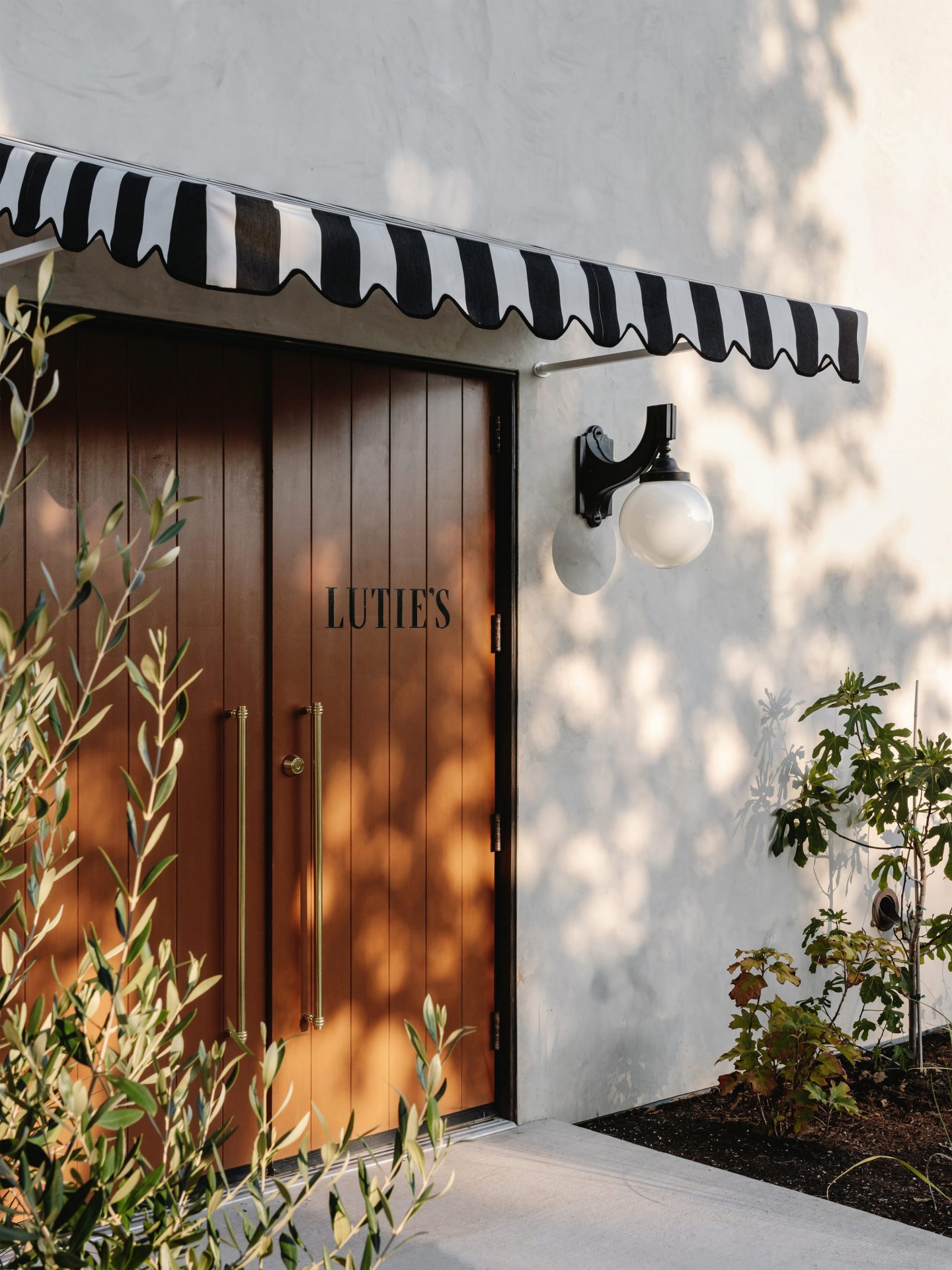
The estate’s destination restaurant, Lutie’s, announces its old-fashioned hospitality within a refined garden setting. Designed by Clayton Korte, the new structure provides guests with vistas overlooking the historic gardens. “Designed not to call attention to itself and eventually to be cloaked entirely in ivy, the restaurant is meant to be a backdrop to the garden and the events held within,” notes Paul Clayton, founding partner at Clayton Korte. Ken Fulk added a sophisticated floral pattern throughout the interior matched by a classic country club–style striped awning on the patio. To create a true sense of place, the latticework ceiling is hung with plants and on the far wall, the estate’s original stone perimeter wall peeks through above the scalloped banquette.

